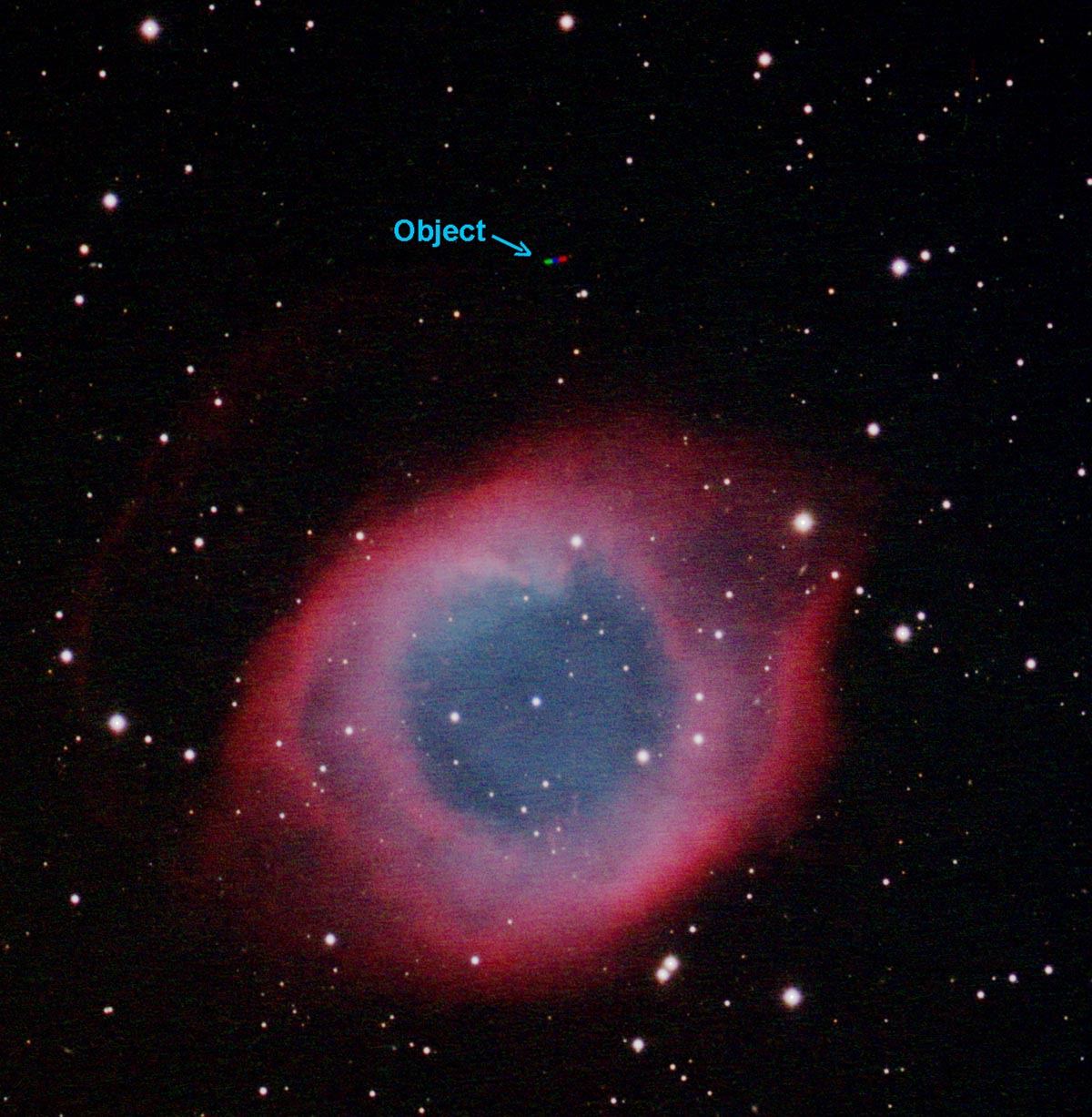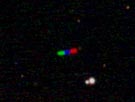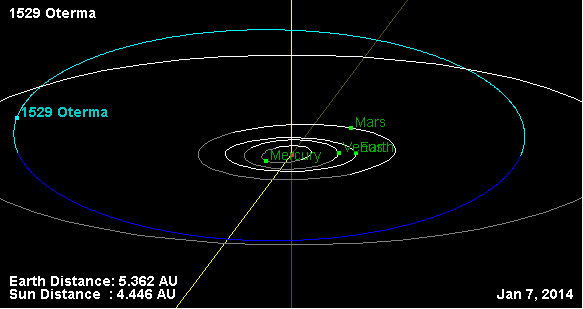
 | SOCO Blog |
24 October 2015
MYSTERY OBJECT
Sometimes when you're imaging an object, you get more than you originally expected. Back on October 16, I posted a blog entry showing imagery of a couple of nice planetary nebulas, including the Helix Nebula in Aquarius. What I didn't mention in that entry was what also showed up in the imagery. No, no, not space aliens ... but something pretty interesting in itself.
Figure 1 shows a portion of the image of the Helix Nebula that appeared in that blog entry. When I had processed that image, I immediately noticed something lying above the nebula. From its appearance, it was obviously not "hot pixels" or a cosmic ray hit— it was something real. Figure 2 shows an enlargement of the mystery object. When I did my imaging that night, I acquired the green imagery first, followed by the blue imagery and then the red imagery. Whatever this thing was, it was definitely moving in space, from left to right in the image.
(By the way, in the color imagery of the Helix Nebula that I presented in the previous blog entry, I used Photoshop to remove the "mystery object" to avoid having to explain its presence.)

Figure 1. The "mystery object" present in the imagery of the Helix Nebula.

Figure 2. Enlargement of the "mystery object".
So, what could the object be? I have previously (intentionally) imaged asteroids, and this looked a lot like them. To find out, there is a wonderful service provided by Lowell Observatory that will plot a finder map of the known asteroids in a given portion of the sky. You just have to provide the location (RA and Declination), the date, and the time. The median date and time for my imaging session for the Helix Nebula was 13 October at approximately 0500 UT. The Lowell Observatory service returned the finder map shown in Figure 3.

Figure 3. Map produced by Lowell Observatory showing the asteroids in the vicinity of the Helix Nebula.
Source: Lowell Observatory.
As shown in Figure 3, there were two asteroids (with magnitudes brighter than 19.5) in this part of the sky at my observing time. One was 1529 (oterma) and the other was 28445 (2000 AQ95). Comparison of Figure 3 with Figure 1 shows a close correspondence of the location of 1529 (oterma) with the "mystery object". The arrow inside the circle denoting the location of 1529 (oterma) in Figure 3 shows its direction of movement— this corresponds with the movement of the object indicated in Figure 2. Also, tabular data provided by Lowell Observatory along with the finder map indicated that 1529 (oterma) should have a visual magnitude of 15.5, which seems reasonable for the appearance of the object in the imagery.
So, what is 1529 (oterma)? 1529 Oterma is an outer main-belt asteroid discovered by Y. Vaisala on January 26, 1938. It was named after the Finnish astronomer Liisi Oterma. It has a period of 7.99 years in an orbit nominally 4 Astronomical Units (370 million miles) from the sun (see Figure 4).

Figure 4. The orbit of the asteroid 1529 Oterma.
Source: NASA JPL/Caltech.
So, I didn't discover a new asteroid that is going to hit the Earth and end civilization. The importance of this discussion is really to highlight some of the great tools and services that are available to astronomers today, like this asteroid-identifer. The Internet is full of information that can make the lives of astronomers (particularly amatuer astronomers) much easier.
 Return to SOCO Blog Page
Return to SOCO Blog Page
 Return to SOCO Main Page
Return to SOCO Main Page
Questions or comments? Email SOCO@cat-star.org